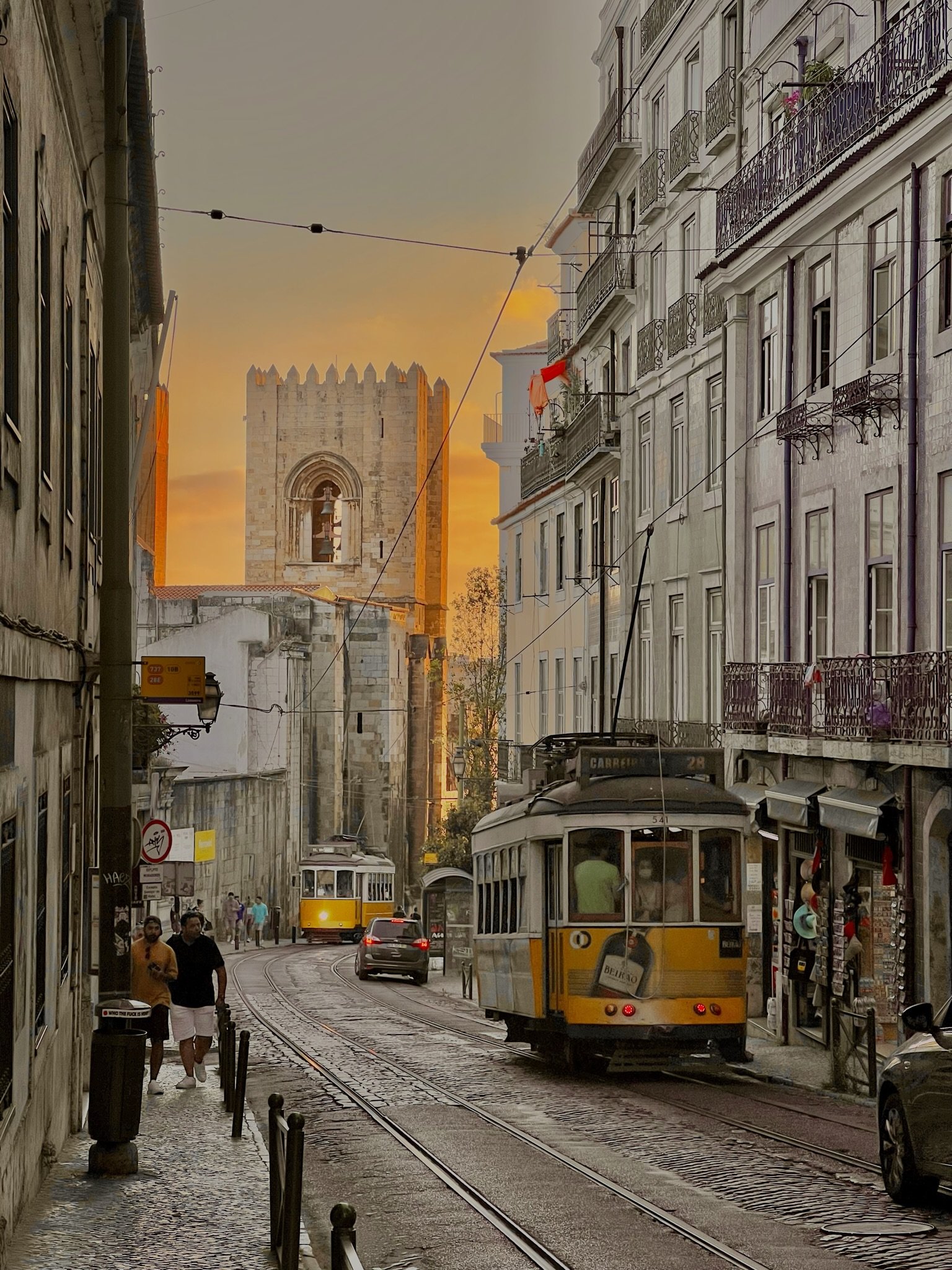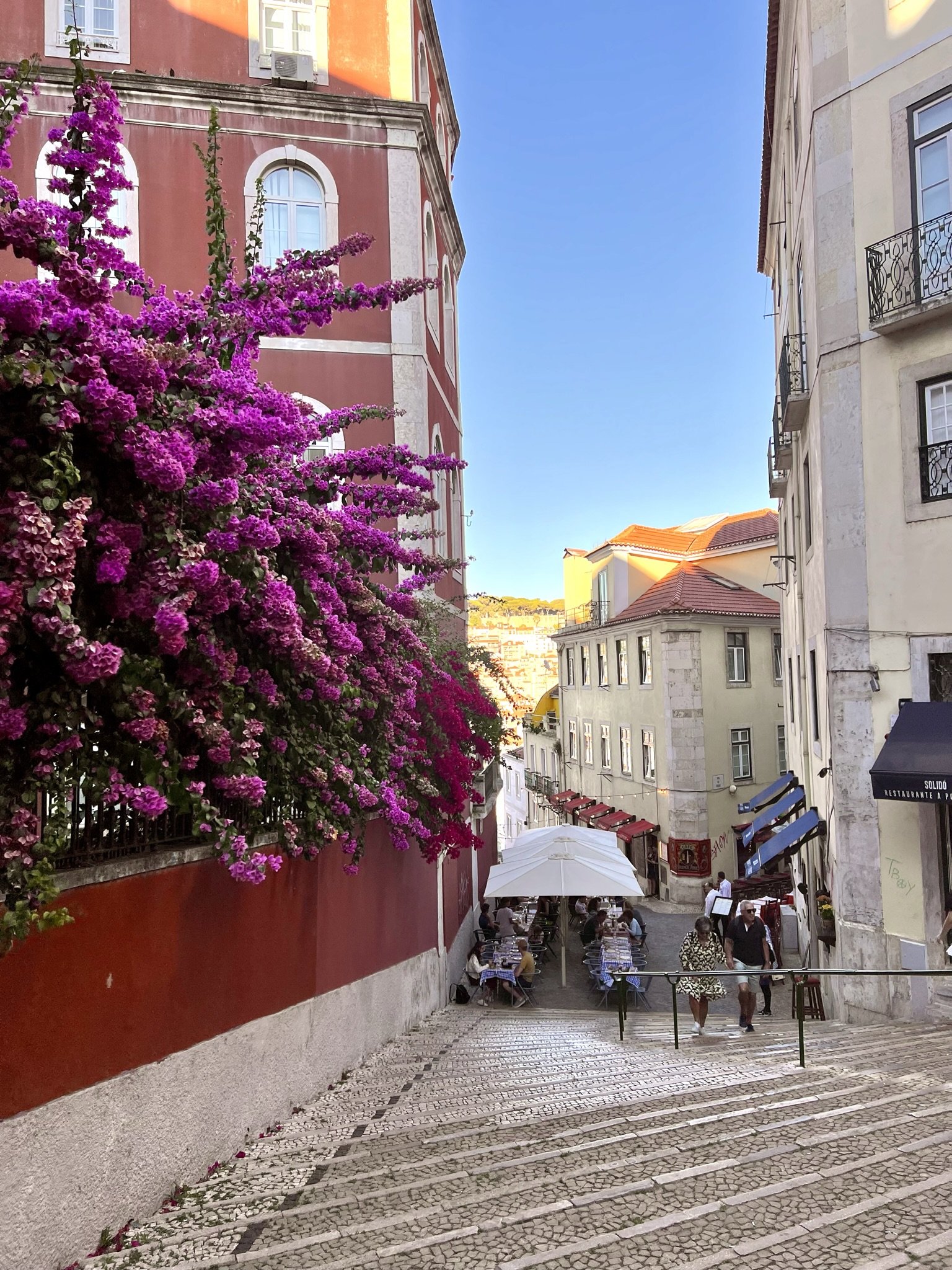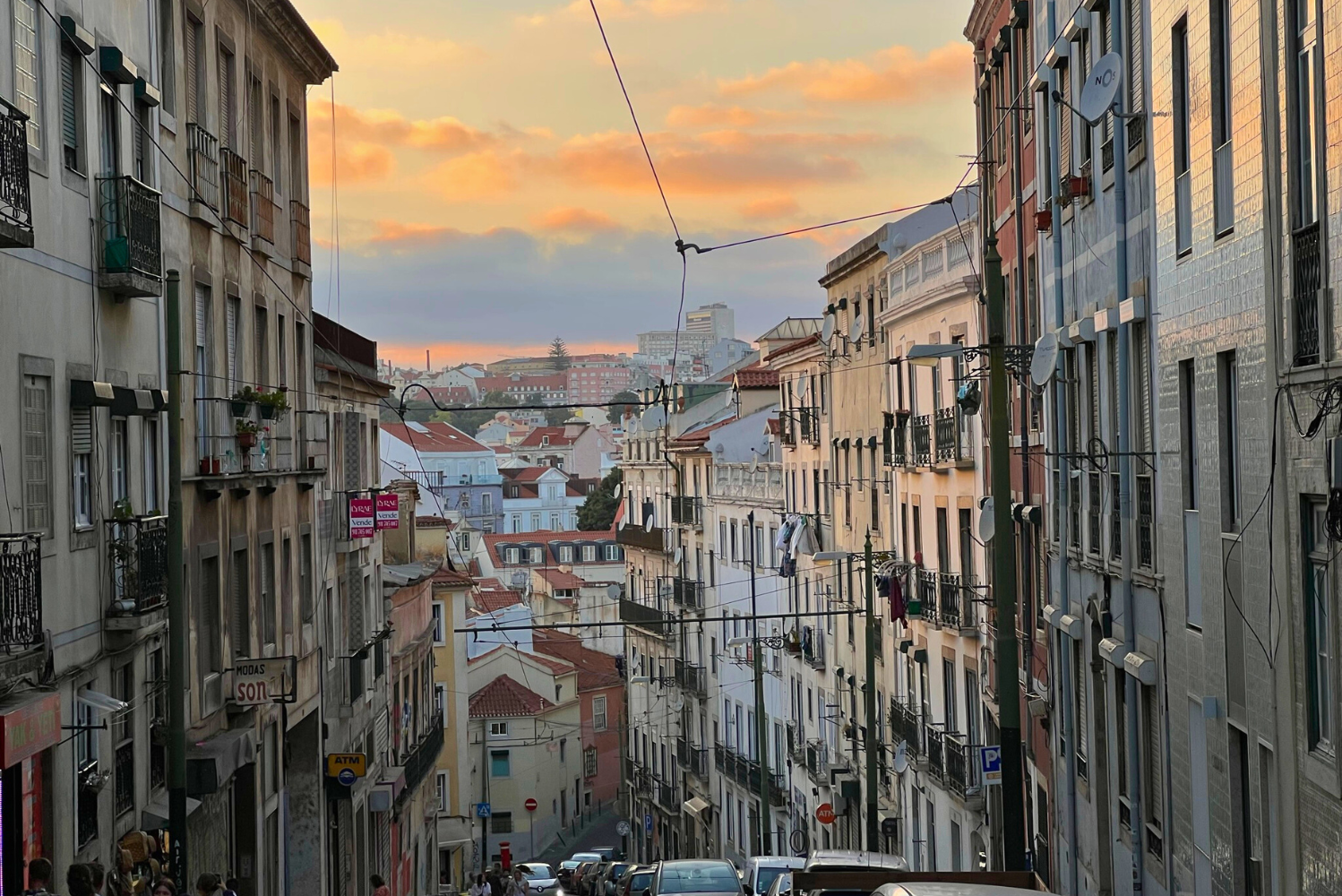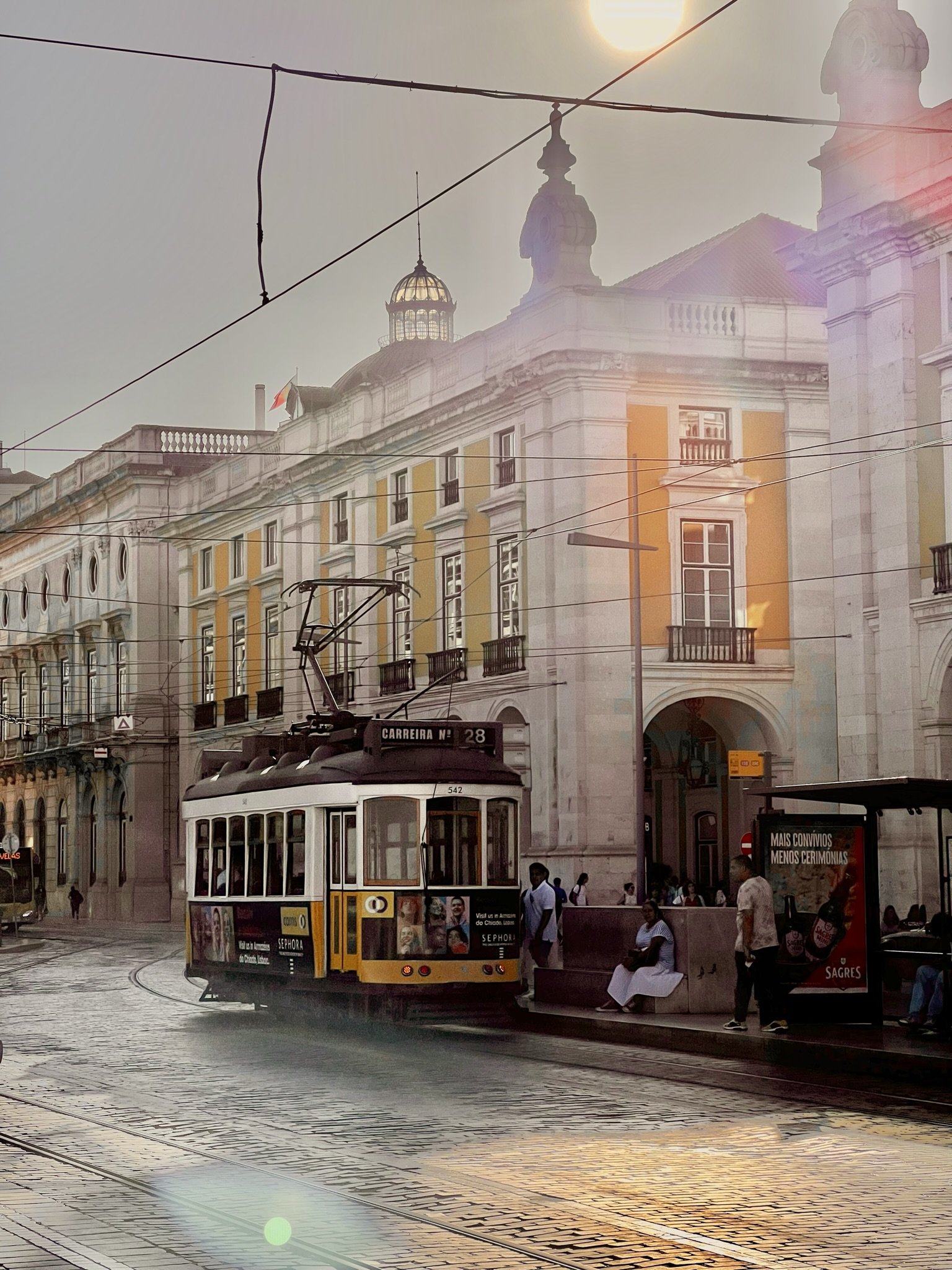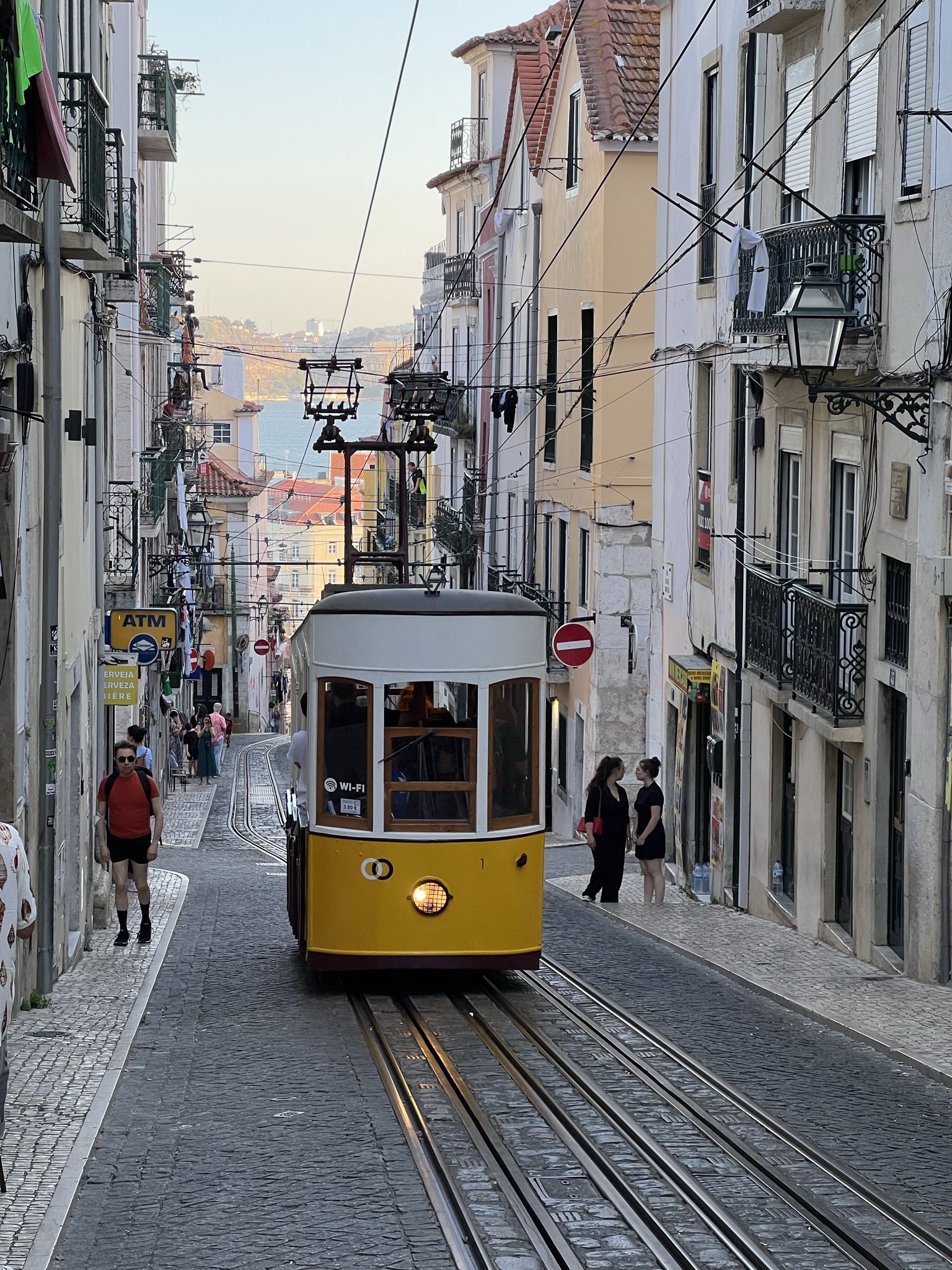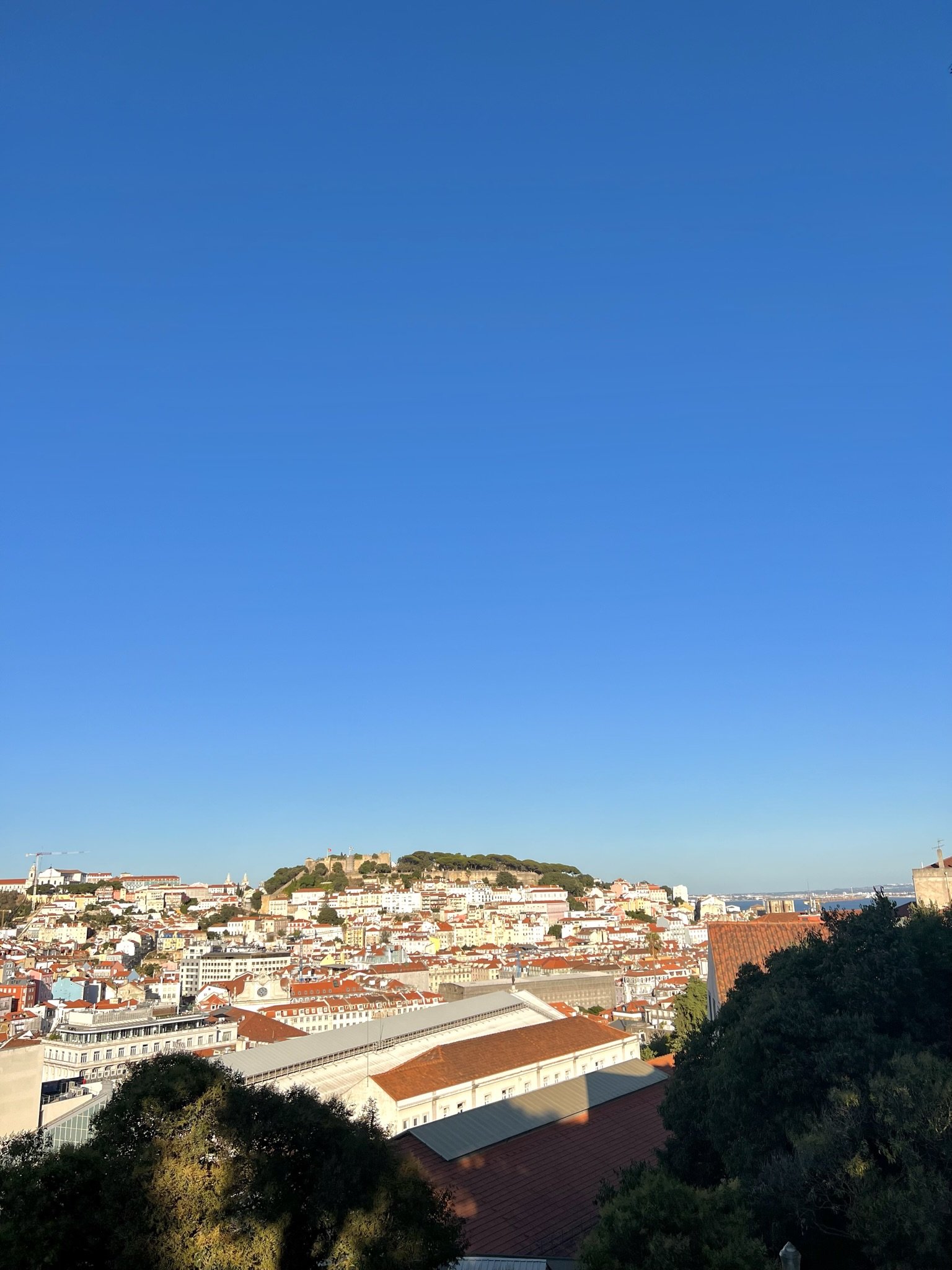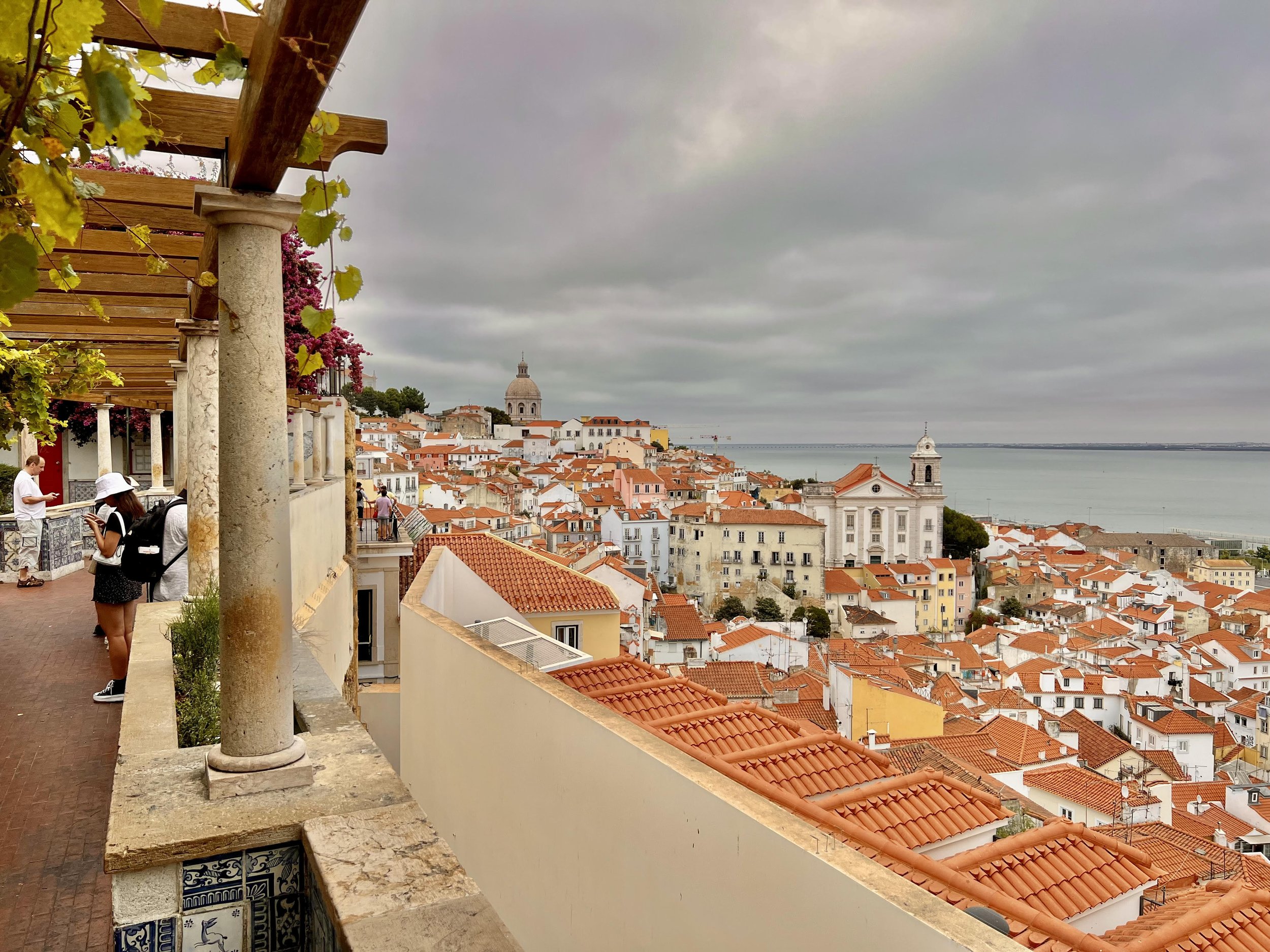
Lisbon, Portugal Travel Guide: What to See, Where to Stay and What to Eat
Lisbon, Portugal
Lisbon, the capital city of Portugal, is a vibrant and charming destination that combines rich history, stunning architecture, and a lively atmosphere. From its iconic yellow trams moving through narrow streets to the breathtaking views from its numerous viewpoints, Lisbon offers a perfect blend of old-world charm and modern sophistication. With its warm Mediterranean climate, delectable cuisine, and friendly locals, Lisbon is an enchanting city that captivates visitors with its unique character.
Table of Contents
About Lisbon, Portugal
Climate
Language
Currency
Transportation
Safety
Cuisine
Tipping
Fado Music
Areas in Lisbon, Portugal to Stay in
Top Things to Do in Lisbon
Day Trips from Lisbon
Additional Portugal Travel Blogs
Portugal Itinerary: How to Spend 8 Days in Portugal
Best Beaches to Visit in Lagos, Portugal
Everything You Need to Know Before Visiting Porto, Portugal: Travel Guide
Lisbon, the capital and largest city of Portugal, is located on the western coast of the Iberian Peninsula. Known for its vibrant atmosphere, rich history, and stunning architecture, Lisbon offers a unique blend of old-world charm and modern vitality.
The city is characterized by its picturesque setting, with hills and the Tagus River adding to its beauty. Lisbon is a city of contrasts, where ancient monuments and traditional neighborhoods coexist with contemporary art, trendy cafes, and bustling nightlife.
Lisbon boasts a wealth of historical landmarks, including the imposing São Jorge Castle, a Moorish fortress that offers panoramic views of the city, and the iconic Belém Tower, an emblem of Portugal's maritime past.
Wandering through Lisbon's neighborhoods is a delightful experience. Alfama, with its narrow streets, colorful houses, and Fado music echoing from taverns, captures the essence of traditional Lisbon. Bairro Alto, on the other hand, comes alive at night with its vibrant bars and clubs, making it a popular destination for those seeking a lively nightlife scene.
Lisbon captivates visitors with its captivating blend of history, culture, and vibrant energy. Its architectural beauty, delectable cuisine, and warm hospitality make it a must-visit destination for travelers seeking an unforgettable experience in Europe.
Climate: Lisbon has a Mediterranean climate with mild winters and warm summers. The best time to visit is during spring (April to June) and fall (September to October) when the weather is pleasant and there are fewer crowds.
Language: The official language of Portugal is Portuguese. While many locals in Lisbon can speak English, it's helpful to learn a few basic Portuguese phrases or carry a phrasebook for convenience.
Currency: The currency used in Lisbon is the Euro (€). It's advisable to exchange currency before your trip or withdraw cash from ATMs, which are widely available throughout the city, but cards are also accepted in a number of establishments.
Transportation: Lisbon has an extensive public transportation system, including buses, trams, metro, and trains. The metro is a convenient way to get around the city, and the trams are iconic and offer a unique experience. Consider getting a rechargeable transport card (Viva Viagem) for discounted fares. Hot tip: many tourists come to Lisbon hoping to ride Tram 28, which will take you around various parts of the city on the famous yellow tram, but there tends to be quite the line to ride this tram, so you can also ride Tram routes 12, 15e, 18, 24, and 25, which all use the iconic trams.
Safety: Lisbon is generally a safe city, but it's always wise to take precautions like avoiding isolated areas at night and keeping an eye on your belongings in crowded places. Be cautious of pickpockets, especially in popular tourist areas.
Cuisine: Portuguese cuisine is diverse, flavorful, and influenced by its maritime history, Mediterranean roots, and regional traditions. It offers a delightful blend of fresh ingredients, traditional dishes, and a focus on simple yet delicious flavors. Here are some highlights of Portuguese cuisine to try on your trip to Portugal:
Seafood: With its long coastline, Portugal is renowned for its exceptional seafood. Grilled sardines, bacalhau, octopus, clams, and prawns are popular and often featured in various dishes.
Pastel de Nata: Portugal's most famous sweet treat is the Pastel de Nata. These custard tarts with a flaky pastry crust are typically sprinkled with cinnamon and powdered sugar. The original recipe originates from Lisbon's Belém district, where you can find the iconic Pastéis de Belém pastry shop.
Francesinha: Hailing from Porto, the Francesinha is a hearty sandwich that is a true indulgence. It typically consists of layers of bread filled with ham, sausage, and steak, covered in melted cheese, and served with a rich tomato and beer sauce. It's a decadent and satisfying dish.
Caldo Verde: This traditional Portuguese soup is often enjoyed as a starter or light meal. Caldo Verde is made with kale, potatoes, onions, and chouriço (smoked Portuguese sausage).
Portuguese Wine: Portugal is famous for its wine production, and its wines deserve a special mention. From the robust reds of the Douro Valley to the crisp whites of Vinho Verde, there is a wide range of wines to explore. Don't miss the opportunity to taste the world-renowned Port wine from Porto.
Pastries and Confections: In addition to Pastel de Nata, Portugal offers a variety of delightful pastries and sweets. Queijadas (cheese tarts), Bolo de Arroz (rice muffins), and Pão de Ló (sponge cake) are just a few examples of the delectable treats you can enjoy.
Tipping: In Portugal, tipping is not mandatory, but it's customary to leave a small tip if you receive good service. Generally, leaving 5-10% of the bill is appreciated in restaurants, cafes, and taxis.
Fado Music: Fado is a traditional Portuguese music genre known for its melancholic melodies and expressive lyrics. Experience a Fado performance at one of the local bars or restaurants for an authentic cultural experience during your trip to Portugal.
Areas in Lisbon, Portugal to Stay in
Lisbon offers a variety of neighborhoods, each with its own unique charm and character. The best area for you to stay in depends on your preferences and interests. Here are some popular neighborhoods in Lisbon:
Baixa: Located in the heart of Lisbon, Baixa is the downtown area and a central hub for shopping, dining, and transportation. It offers a mix of grand plazas, elegant squares, and historic buildings. Staying in Baixa provides easy access to major attractions and excellent public transportation connections.
I stayed in Lisbon one night at the beginning of my trip and stayed in Baixa. I really liked staying in this area because it’s so centrally located to all of the spots I wanted to see in Lisbon.
Chiado: Just uphill from Baixa, Chiado is known for its vibrant atmosphere, trendy boutiques, and lively café culture. It's a great area for shopping, dining, and enjoying the arts. Chiado is centrally located and close to attractions like the São Carlos Theater and the iconic Café A Brasileira.
Alfama: One of Lisbon's oldest neighborhoods, Alfama is a maze of narrow streets, colorful houses, and steep hills. It has a distinct old-world charm and is famous for its Fado music and traditional taverns. Staying in Alfama immerses you in Lisbon's history and offers stunning views from its miradouros (viewpoints).
Bairro Alto: Known for its vibrant nightlife, Bairro Alto comes alive after dark with its numerous bars, clubs, and live music venues. During the day, it offers picturesque streets, trendy shops, and interesting street art. Bairro Alto is an excellent choice for those seeking a lively and energetic atmosphere.
Príncipe Real: Príncipe Real is an up-and-coming neighborhood known for its trendy boutiques, art galleries, and beautiful gardens. It offers a more relaxed and upscale ambiance compared to the bustling city center. Príncipe Real is also close to the iconic viewpoint of Miradouro de São Pedro de Alcântara.
Belém: Situated to the west of the city center, Belém is a historic district known for its significant landmarks, such as the Belém Tower and the Jerónimos Monastery. It offers a quieter and more serene environment, with beautiful riverside views and green spaces. Belém is a good choice for those interested in history and culture.
Mouraria: Mouraria is a historic neighborhood located in the heart of Lisbon, Portugal. Known as one of the most traditional and multicultural areas of the city, Mouraria has a rich history that dates back to the Moorish period. The neighborhood is characterized by narrow, winding streets and small squares lined with colorful buildings. It has a distinct old-world charm and a vibrant atmosphere that captivates visitors.
When I came back to Lisbon after my time in Porto and Lagos, I stayed in this area of Lisbon and really liked that it was a bit quieter of a neighborhood. If you’re looking for a reasonably priced, nice hotel, I HIGHLY recommend staying at Quinta Colina Boutique Guesthouse. This was by far one of the best hotels I've stayed at. The staff was incredibly kind and accommodating, especially with a vegan diet. The views from the rooftop are legendary.
Top 20 Things to Do in Lisbon, Portugal
Visit the historic Belém Tower, an iconic symbol of Lisbon's maritime heritage.
Wander through the historic Alfama district, with its narrow streets, colorful houses, and Fado music.
Explore the beautiful Jerónimos Monastery, a UNESCO World Heritage site known for its stunning Manueline architecture.
Ride the iconic Tram 28, which traverses the city's hills, offering a scenic tour of Lisbon's neighborhoods.
Enjoy panoramic views of the city from São Jorge Castle, a medieval fortress with picturesque gardens.
Stroll along the lively waterfront area of Praça do Comércio and enjoy the riverside atmosphere.
Visit the trendy neighborhood of Chiado for shopping, dining, and cultural experiences.
Explore the LX Factory, a creative hub housed in a former industrial complex with art galleries, shops, and restaurants.
Discover the modern architecture of the Parque das Nações district, home to the Oceanário de Lisboa (Lisbon Oceanarium) and the Vasco da Gama Bridge.
Explore the colorful streets of Bairro Alto, known for its vibrant nightlife and live music scene.
Visit the National Tile Museum (Museu Nacional do Azulejo) to appreciate the artistry and history of Portuguese tiles.
Enjoy a performance of Fado, traditional Portuguese music, at a local Fado house.
Explore the vibrant and historic market of Mercado da Ribeira, now transformed into a food court with a variety of culinary delights.
Take a relaxing boat ride along the Tagus River, offering beautiful views of the city's skyline.
Visit the Calouste Gulbenkian Museum, home to an impressive collection of art spanning various periods and cultures.
Stroll through Parque Eduardo VII, a sloped, scenic park featuring tree-lined walking paths, manicured lawns & distant water views.
Visit the charming village of Belém, known for its iconic Pastéis de Belém and historical landmarks.
Explore the enchanting botanical gardens of Estufa Fria and Estufa Quente.
Take in the breathtaking views of Lisbon from one of its many miradouros (viewpoints), such as Miradouro da Senhora do Monte or Miradouro da Graça.
Admire the view from the famous Miradouro de Santa Luzia viewing point.
Day Trips from Lisbon
Lisbon serves as a perfect base for exploring the surrounding regions of Portugal. Here are some of the best day trips you can take from Lisbon:
Sintra: Just a short distance from Lisbon, Sintra is a fairytale-like town known for its stunning palaces, lush gardens, and mystical atmosphere. Visit the colorful Pena Palace, the romantic Quinta da Regaleira, and the Moorish Castle. Don't miss the beautiful Sintra-Cascais Natural Park.
Cascais and Estoril: These coastal towns offer beautiful beaches, charming streets, and a relaxed atmosphere. Enjoy the scenic coastal drive, visit the Boca do Inferno (Hell's Mouth), and explore the historic center of Cascais. Estoril is known for its glamorous Casino Estoril and lovely promenade.
Óbidos: Step into a medieval world by visiting Óbidos, a picturesque walled town. Wander through its narrow cobblestone streets, explore the castle, and indulge in the famous Ginja liqueur served in chocolate cups.
Évora: Venture into the Alentejo region and visit Évora, a UNESCO World Heritage city. Marvel at its well-preserved Roman Temple, visit the haunting Chapel of Bones and explore the charming historic center with its narrow alleys and white-washed houses.
Tomar: Discover the Templar history in Tomar. Explore the Convent of Christ, a Templar castle and UNESCO World Heritage site, and admire its impressive Manueline architecture. Don't miss the beautiful Charola, a unique round church within the castle complex.
Sesimbra and Arrábida Natural Park: Head to Sesimbra, a fishing village with beautiful beaches and a picturesque harbor. From there, explore the stunning Arrábida Natural Park, known for its rugged coastline, crystal-clear waters, and vineyards.
Nazaré: Visit the coastal town of Nazaré, known for its giant waves that attract surfers from around the world. Take in the beautiful views from the Sitio promontory, visit the Sanctuary of Our Lady of Nazaré, and enjoy fresh seafood.
Setúbal and Troia: Journey south to Setúbal, a charming city known for its seafood and proximity to the Serra da Arrábida Natural Park. Take a ferry to the nearby peninsula of Troia, where you can relax on pristine beaches and explore Roman ruins.
These day trips offer a diverse range of experiences, from historical landmarks to beautiful coastal scenery and charming towns. Each destination provides a unique glimpse into the rich cultural and natural heritage of Portugal.

